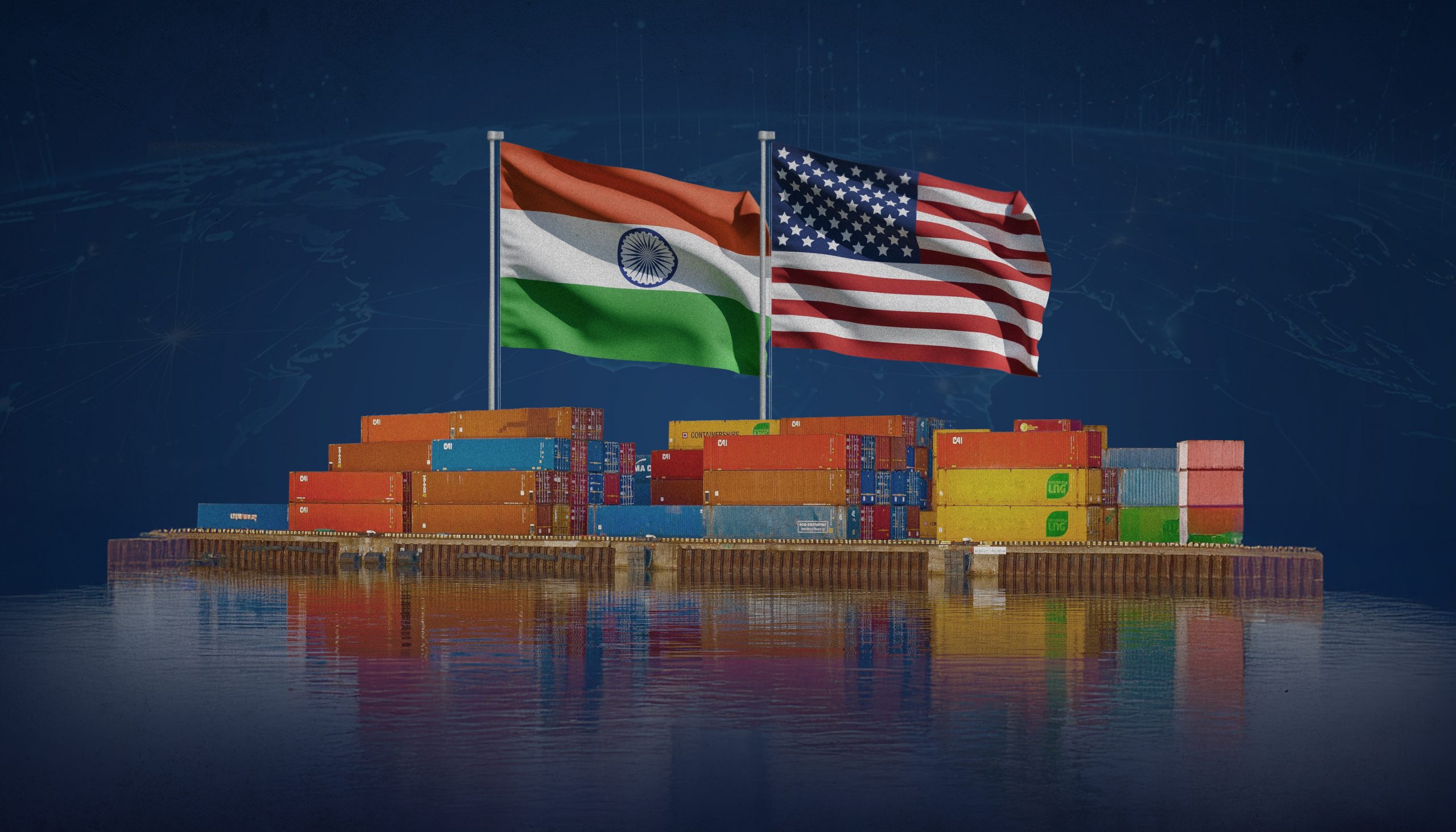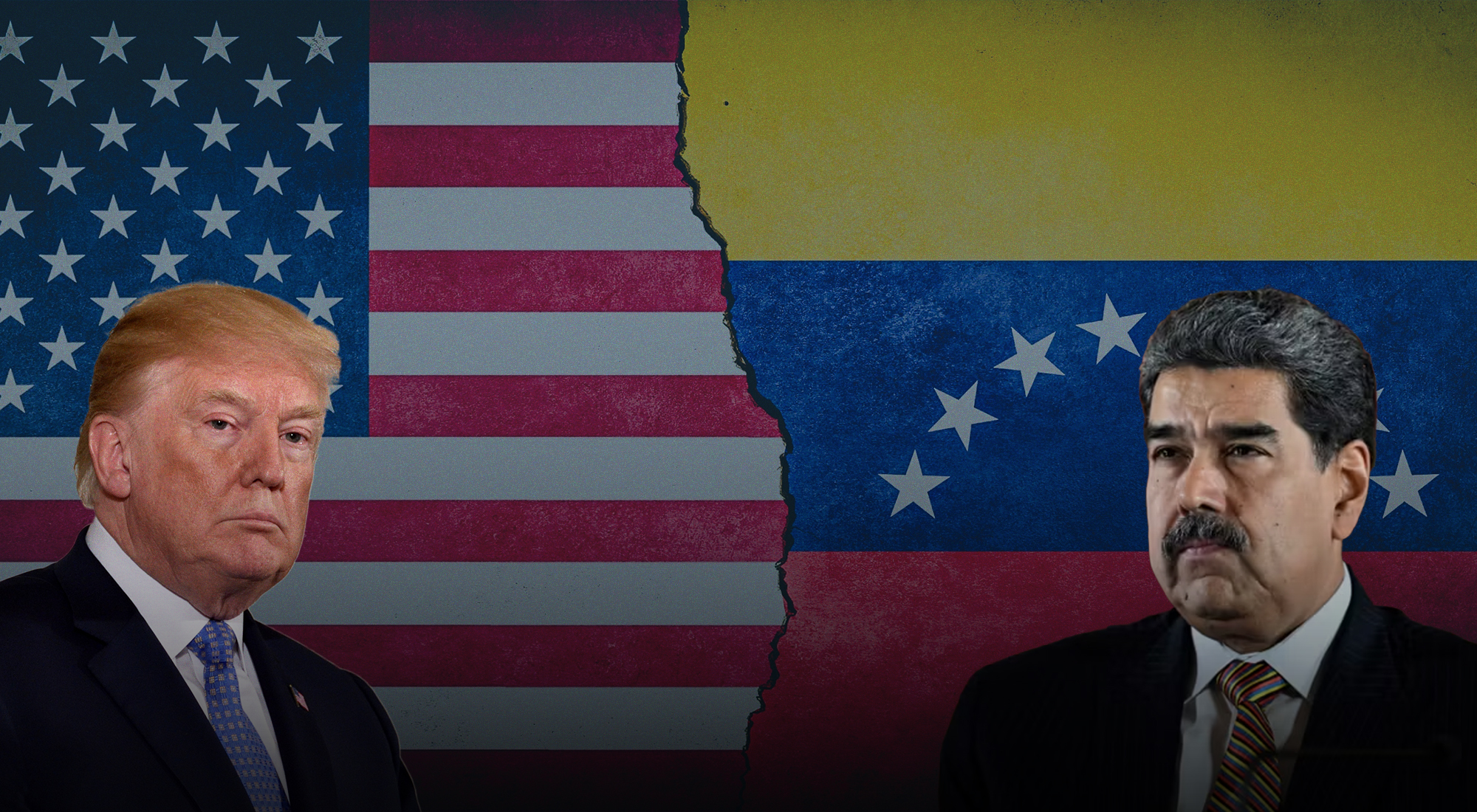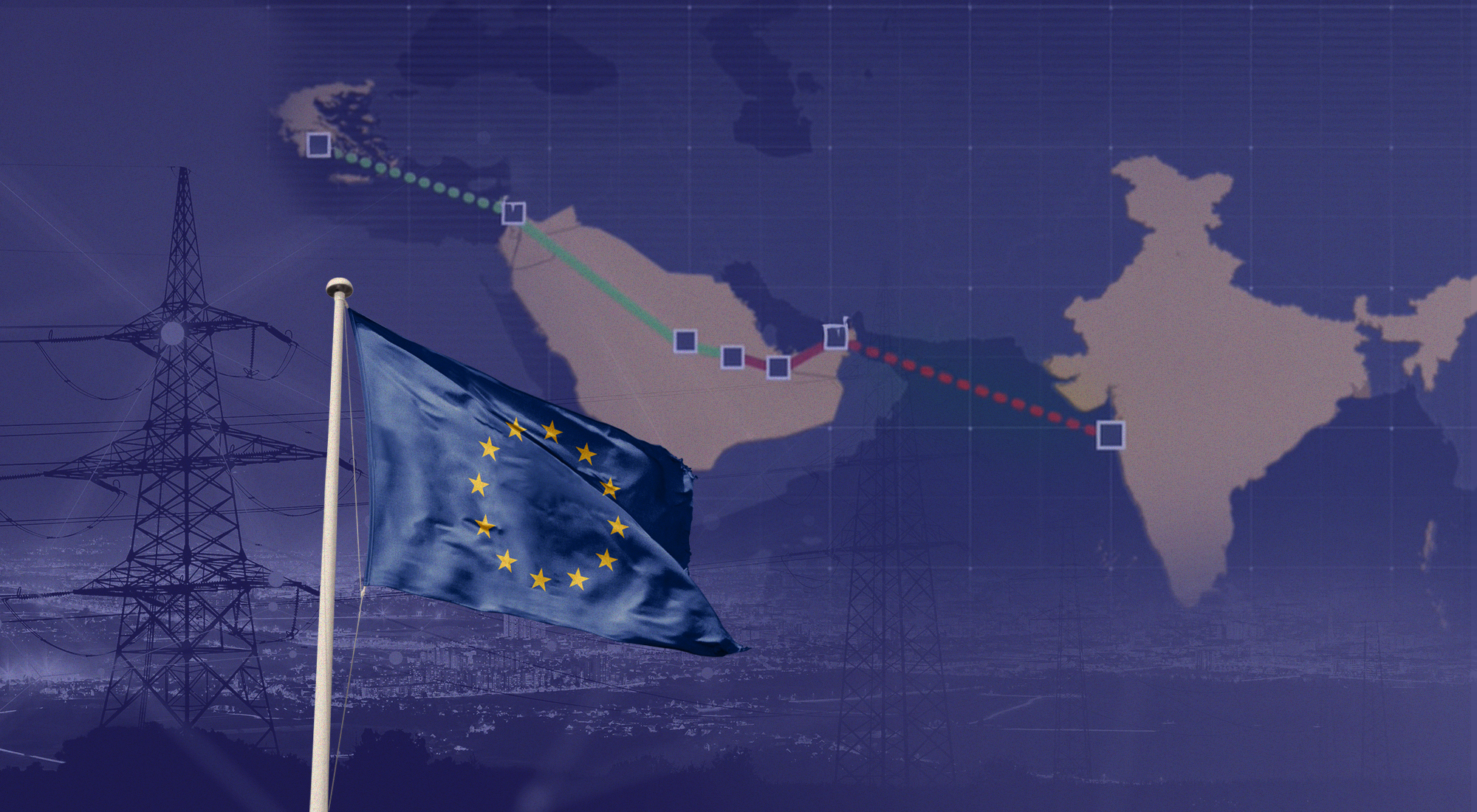“The more things change, the more they stay the same”, lamented the 19th century French writer Jean-Baptiste Alphonse Karr upon contemplating the vicissitudes of modern politics. In many ways, the same dynamic has taken hold across the Indo-Pacific, where a new era of great power competition is upending the decades-old liberal international order in the region.
By and large, the Biden administration has embraced its predecessor’s “New Cold War” against China, albeit with greater focus on diplomatic engagement, alliance-building and multilateralism. Over the past year, the US fortified its defense relations with fellow Indo-Pacific powers, further institutionalized the Quadrilateral Security Dialogue, also known as “Quad”, and reset frayed strategic relations with treaty allies from Western Europe to Southeast Asia.
The intensified Sino-American competition in Asia, however, has been mediated by cautious brinksmanship and mature statesmanship. In fairness, both the US President Joseph Biden and China’s paramount leader Xi Jinping have repeatedly emphasized, either during direct conversations or in multilateral fora, the necessity for sustained diplomacy and institutionalized dialogue in order to avoid a geopolitical catastrophe.[1] Moreover, the New Cold War in Asia has also unleashed a semblance of healthy competition between the two superpowers, which have stepped up their ‘vaccine diplomacy’ in vitals theatres of competition such as Southeast Asia.
Despite the early success of its hyperactive diplomacy throughout 2021, which helped staunch lingering resentments among allies and strategic partners, the Biden administration is bound to come under growing pressure on multiple fronts next year. From the festering maritime disputes in the South China Sea, to the troubling uptick in cross-straits tensions between Taipei and Beijing, the Biden administration will have to navigate a plethora of geopolitical minefields. Moreover, the US is yet to provide any clear alternative to China’s expanding trade and investment footprint across the Indo-Pacific, especially in Southeast Asia.
More Continuity than Change
Former President Donald Trump enjoyed relatively warm relations with strategic partners from the Middle East to South Asia and Southeast Asia. Yet, he remained unpopular among traditional allies in Western Europe and Northeast Asia. From Australia and Britain to France, Japan and South Korea, significant majorities of respondents expressed low confidence in the former US president, according to a 2020 Pew Research Centre survey.[2] Eager to restore America’s frayed alliances and global leadership, Biden promised to “lead the world, not retreat from it” by emphasizing multilateralism, alliance-building, and promotion of liberal values in American foreign policy.[3]
But despite his deep experience in foreign policy, from his days in the US Senate to his proactive international role as a former vice-president under the Obama administration, Biden’s presidency initially appeared as an enigma to many international observers. On one hand, there was an element of handwringing among partners in Asia, from Taiwan to the Philippines and Vietnam, who wondered whether the new Democratic president would take a softer approach to a resurgent China. After all, his predecessor Trump’s tough China policy was broadly welcomed by regional states, which happen to have maritime and territorial disputes with the Asian powerhouse.[4]
Meanwhile, other observers wondered if Biden would be too ideological in his foreign policy doctrine and, accordingly, recklessly confrontational vis-à-vis China. In recent years, Biden openly discarded his earlier call for “strategic empathy” towards China in favor of a more muscular approach, whereby “the United States does need to get tough with China”, because the Asian power is allegedly “robbing the United States and American companies of their technology and intellectual property.”[5]
Beyond his populist-nationalist posturing, however, Biden also dispensed with the more pragmatic approach of his immediate predecessors, Obama and Trump, who were similarly skeptical of exporting American democratic values overseas. Fresh into office, Biden portrayed China as an existential challenge in the 21st century, openly declaring that America is “in a contest…with autocrats, autocratic governments around the world.” He upped the ante by calling for a proactive promotion of democratic values overseas, since “[d]emocracy doesn’t happen by accident. We have to defend it, fight for it, strengthen it, renew it.” This is precisely why Biden would later host the first-ever “Summit for Democracy” despite heavy criticism from both rivals and allies.[6]
Hyperactive Diplomacy
A careful evaluation of the Biden administration’s foreign policy over the past year, however, reveals a calibrated combination of hyperactive diplomacy and tough posturing. The Secretary of State Antony Blinken, widely seen as Biden’s “alter ego”, revealed the contours of an emerging ‘Biden Doctrine’ during his confirmation hearing last year, where the incoming US diplomatic chief argued that the US should prioritize alliance-building and sincere diplomatic engagement, while maintaining that “President Trump was right in taking a tougher approach to China.”[7] To this end, the US Secretary of State Blinken and other top Biden administration officials immediately embarked on a diplomatic marathon upon their assumption of office.
Within the first few months of the Biden administration, Blinken and US Defense Secretary Lloyd Austin held multiple virtual and in-person meetings with key allies in Europe and Asia. It didn’t take long before the Biden administration also organized the first-ever Quad Summit, which saw the leaders of the US, Australia, India and Japan discussing the future of their burgeoning alliance. Months later, Washington announced the AUKUS (Australia-US-UK) nuclear submarine deal, which underscored rapidly deepening defense cooperation among likeminded Indo-Pacific powers.[8]
Despite a relatively slow start, the US also stepped up its diplomatic engagement with Southeast Asian nations, which felt partly snubbed by Trump after he skipped multiple ASEAN summits throughout his years in office. To win back support in the vital region, Biden deployed three cabinet-level US officials in the latter-half of 2021, while personally attending the US-ASEAN summit in November. Despite travel restrictions amid the raging COVID-19 pandemic, the US Vice President Kamala Harris visited (August) Singapore and Vietnam just weeks after Austin’s visit (July) to the region. On his part, Blinken capped the US’ Asia policy in 2021 by visiting (December) Malaysia and Indonesia, where he laid out the contours of the Biden administration’s Indo-Pacific strategy and promised to step up Washington’s strategic and economic engagement in order to counter China’s growing influence in the region.[9]
A Healthy Competition
Overall, the Biden administration managed to successfully reset frayed relations with key members of the Association of Southeast Asian Nations (ASEAN), while fortifying defense ties with the fellow Quad powers of Australia, India and Japan. A key element of the US’ charmoffensive across Asia is its proactive “vaccine diplomacy”, which culminated in the donation of as many as 23 million US-made COVID-19 vaccines to Southeast Asian nations, in addition to $158 million in public health infrastructure assistance to the region.[10]
Over the coming year, the Biden administration is set to donate up to 500 million Pfizer COVID-19 vaccine doses to COVAX and other international vaccine distribution regimes focusing on developing countries.[11] The strategic dividends were clear. In the Philippines, the Beijing-friendly President Rodrigo Duterte publicly thanked Biden for millions of American-made COVID-19 vaccine donations and, accordingly, decided to fully restore the Philippine-US Visiting Forces Agreement — the legal framework governing bilateral military cooperation — which he had temporarily suspended amid disagreements over human rights issues in previous years.[12] Interestingly, the US’ proactive public healthy diplomacy has been largely inspired by China’s vaccine diplomacy that commenced shortly after the global outbreak of the pandemic.
As early as mid-2020, the Chinese leadership made it clear that it aimed to provide “global public good” through large-scale donation, co-production, and sales of COVID-19 vaccines to the developing countries, especially in neighboring Southeast Asia. As a result, the Chinese government heavily backed local pharmaceutical companies such as Sinovac, Sinopharm, and CanSino, which became the backbone of Beijing’s public healthy diplomacy in the region. Within months, Chinese vaccine producers launched clinical trials in 18 developing countries across multiple continents, with Beijing promising to export as many as 572 million doses in order to help combat the COVID-19 pandemic. China even offered streamlined visa applications for foreign citizens who used Chinese-made COVID-19 vaccines.[13]
Earlier, China made major diplomatic strides through the large-scale donation of Chinese-made PPEs and test kits across the developing world as well as Western Europe under its new “Health Silk Road” initiative. In particular, China’s partners under the Belt and Road Initiative (BRI) became a top priority. By late 2020, Beijing announced that it would be providing free COVID-19 vaccines to as many as 69 countries, while commercially exporting doses to 28 others under preferential deals. Among the first major recipients of Chinese-made vaccines was Indonesia, the ASEAN’s largest member, which began co-producing Chinese vaccines. Soon after this initiative, the Philippines and other key ASEAN countries such as Thailand and Malaysia followed suit.[14]
In response, the Biden administration began stepping up its own public health diplomacy across the Indo-Pacific. In tandem with Quad powers, the US announced joint production of up to 1 billion doses to developing nations, especially those in Southeast Asia. European allies also stepped up their game accordingly by expanding their donations to Indo-Pacific nations via the COVAX facility.[15] In short, great power competition culminated in the rapid expansion of desperately-needed public health assistance to key regions such as Southeast Asia.
Challenges Ahead
By and large, the Biden administration’s diplomatic efforts seem to have paid off. The average confidence in US presidency jumped from as low as 17 percent in the final months of the Trump administration to as high as 75 percent in the first year of Biden’s presidency, according to the Pew Research Center survey.[16] But having picked the low-hanging strategic fruits, the Biden administration is bound to confront a far more challenging geopolitical landscape in 2022.
To begin with, Washington is yet to provide any tangible alternative to either China’s BRI infrastructure initiative; nor has it proposed a replacement for the Trump-nixed Trans-Pacific Partnership (TPP) trade deal, which was supposed to boost US trade and investment relations with Indo-Pacific nations. During his visit to Indonesia, Blinken discussed the need for a “comprehensive Indo-Pacific Economic Framework,” yet the Biden administration is yet to provide any concrete detail on its economic strategy in Asia. Nor has it provided any updates on the proposed Digital Free Trade deal for Asia, which would be a relatively modest precursor to potentially more substantial US-led regional trade and investment deals in the future.[17]
No less a figure than Singapore’s Deputy Prime Minister Heng Swee Keat has openly warned that while “the U.S. security presence has brought stability and peace in the region…the U.S. cannot afford to be absent from the region’s evolving economic architecture.”[18] But even in its supposed area of strength, the US is is fast losing ground. On one hand, China is rapidly closing its military gap with the US, thanks to the development of state-of-the-art technologies, including in the realm of Artificial Intelligence (AI), advanced drones, hypersonic missiles, fifth generation fighters and carrier-killer missiles.[19]
Moreover, the Biden administration will likely struggle to enlist regional partners, especially in Southeast Asia, into its ‘integrated deterrence’ strategy against China. Even treaty allies such as the Philippines have expressed ‘neutrality’ amid the ongoing Sino-American rivalry in Asia. As Singapore’s Prime Minister Lee Hsien Loong put it, “we all want to work together with the US … I think not very many countries would like to join a coalition against those who have been excluded, chief of whom would be China.”[20]
Finally, the Biden administration will face daunting challenges in the contested waters of the South China Sea to the increasingly militarized Taiwan Straits. More capable than ever, Beijing has shown growing determination to dominate adjacent waters, fortify its presence on disputed land features in the South China Sea, and reintegrate Taiwan, which it considers as a “renegade province”, by all means necessary, including through force.[21] After a year of calibrated shadowboxing, the US and China are gradually sleepwalking into a far more challenging and tempestuous geopolitical landscape next year.
References
[1] Walker, Tony (2021). “Xi-Biden meeting is cordial, but will anything change between the superpowers?” The Conversation. Retrieved December 22, 2021 https://theconversation.com/xi-biden-meeting-is-cordial-but-will-anything-change-between-the-superpowers-171926
[2] See full details of the Pew Research Centre survey here https://www.pewresearch.org/fact-tank/2020/11/19/the-trump-era-has-seen-a-decline-in-americas-global-reputation/
[3] Bredemeier, Ken. (2020). Biden: US ‘Ready to Lead the World, Not Retreat From It’ Voice of America. Retrieved December 22, 2021 https://www.voanews.com/a/usa_biden-us-ready-lead-world-not-retreat-it/6198779.html
[4] For instance, see Hale, Erin. “Taiwan fears loss in US support as Trump booted from office,” Aljazeera English. Retrieved December 22, 2021 https://www.aljazeera.com/news/2020/11/9/taiwan-fears-loss-in-us-support-as-trump-booted-from-office
[5] Wong Edward, Michael Crowley, & Ana Swanson. “Joe Biden’s China Journey”, The New York Times. Retrieved December 22, 2021 https://www.nytimes.com/2020/09/06/us/politics/biden-china.html
[6] See Heydarian, Richard Javad. “China makes hay of Biden’s democracy summit”, Asia Times. Retrieved December 22, 2021 https://asiatimes.com/2021/12/china-makes-hay-of-bidens-democracy-summit/
[7] See full transcript of US Secretary of State Antony Blinken’s confirmation hearing here. https://www.govinfo.gov/content/pkg/CHRG-117shrg43890/html/CHRG-117shrg43890.htm
[8] See Heydarian, Richard Javad. “How the Aukus ruckus exposes the rifts between US allies in Southeast Asia,” South China Morning Post. Retrieved December 22, 2021 https://www.scmp.com/comment/opinion/article/3150421/how-aukus-ruckus-exposes-rifts-between-us-allies-southeast-asia
[9] See Jakes, Lara & Sui-Lee Wee, “Blinken, in Indonesia, Stresses Soft Power to Counter China”, The New York Times. Retrieved December 22, 2021 https://www.nytimes.com/2021/12/14/world/asia/blinken-indonesia-china.html
[10] For greater details, see https://www.state.gov/u-s-support-to-asean-in-fighting-covid-19/
[11] Ibid.
[12] Jelly, Musico. Duterte thanks Biden, US people for vax donations. Philippine News Agency. Retrieved December 22, 2021
https://www.pna.gov.ph/articles/1149158
[13] See Huang, Yanzhoung. “Vaccine Diplomacy Is Paying Off for China”, Foreign Affairs. Retrieved December 22, 2021
https://www.foreignaffairs.com/articles/china/2021-03-11/vaccine-diplomacy-paying-china
[14] Ibid.
[15] Widakuswara, Patsy. “The ‘Quad’ Aims to Increase Vaccine Production to 1 Billion Doses for Southeast Asia,” Voice of America. Retrieved December 22, 2021
https://www.voanews.com/a/covid-19-pandemic_quad-aims-increase-vaccine-production-1-billion-doses-southeast-asia/6203210.html
[16] For details of the Pew Research Centre survey, see https://www.pewresearch.org/global/2021/06/10/americas-image-abroad-rebounds-with-transition-from-trump-to-biden/
[17] Martin, Peter. “Biden Team Weighs Digital Trade Deal to Counter China in Asia,” Bloomberg. Retrieved December 22, 2021
https://www.bloomberg.com/news/articles/2021-07-12/biden-team-weighs-digital-trade-deal-to-counter-china-in-asia
[18] Koh, Joyce. “U.S. Needs More Substantive Asia Economic Plan, Singapore Says”, Bloomberg. Retrieved December 22, 2021
https://www.bloomberg.com/news/articles/2021-11-30/u-s-needs-more-substantive-asia-economic-plan-singapore-says
[19] Gibson, Liam. “Secret weapons technology poised to propel China ahead of the U.S.” Nikkei Asia. Retrieved December 22, 2021
https://asia.nikkei.com/Opinion/Secret-weapons-technology-poised-to-propel-China-ahead-of-the-U.S
[20] For full transcript of the Singaporean leader’s remarks see https://www.pmo.gov.sg/Newsroom/Interview-with-PM-Lee-Hsien-Loong-for-the-Bloomberg-2020-New-Economy-Forum
[21] Heydarian, Richard Javad. “US risks ‘Suez moment’ in a Taiwan war,” Asia Times. Retrieved December 22, 2021 https://asiatimes.com/2021/11/us-risks-suez-moment-in-a-taiwan-war/








